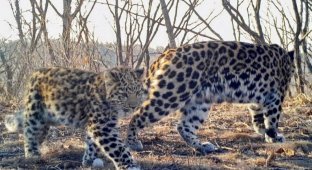Golden wolf: the weakest and smallest predator in the world (9 photos)
This animal lives in North and East Africa. Life in the harsh wastelands hasn't been kind to it—it doesn't even look like a formidable predator. Males weigh about 15 kg, females about 10. 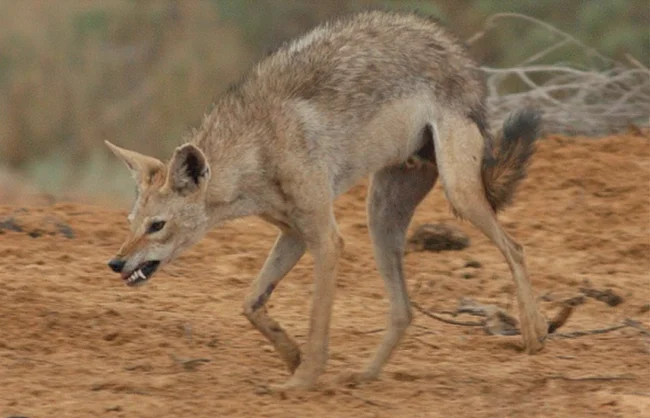
This might look scary if this animal weren't knee-high.
They eat all sorts of small creatures: rodents, insects, eggs, birds, lizards, carrion, and fruit. If a family has enough striking power, they can even hunt "large game" like hares or dik-diks. What's not a jackal? That's what scientists thought, dubbing the animal appropriately—the wolf jackal. 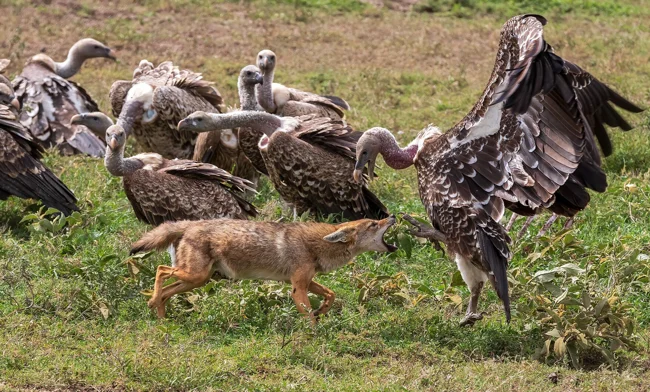
— Hey, kid, why are you so angry? — I'm not a little one! That's the average height for wolves in our region!
But if you look beyond its size, you begin to notice features that aren't exactly jackal-like: a powerful chest, a prominent head, long, lean legs, large paws with long toes, and a distinctive coat with white patches on the muzzle and a black (or very dark) tail tip. In 2015, someone became suspicious. Genetic analysis conducted during extensive international research revealed that the "Cossack" was a plant. The East African golden wolf turned out to be the only wolf species found south of the Sahara! Yes, this newfound relative looks unimpressive even compared to a coyote, but you can't argue with genes. 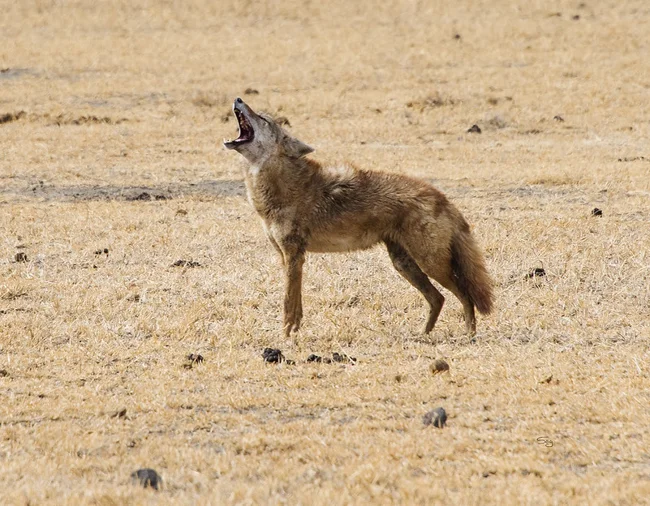
It screams of fate's cruelty.
It is believed that this branch formed about a million years ago. That's when wolves arrived in Africa and were stunned by the local conditions. Lions, leopards, and hyenas—they already occupied the top of the food chain. As a result, the fierce forest beast gradually became smaller, adapting to new conditions and competition. 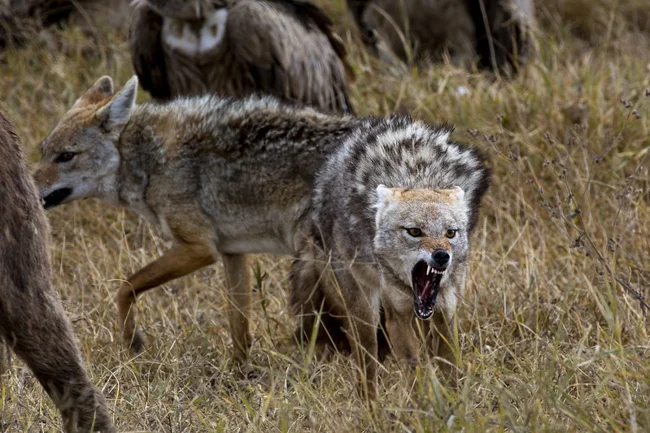
We used to chase those cats up trees in the north! And here they're gobbling up all the tastiest prey. What the hell is this?!
Our hero's biography doesn't feature any legendary hunts or ominous howls under the moon, but it does feature a long, patient adaptation to African life, where such a small predator must fight for every patch of shade and every scrap of food, using his intellect. And he's got intellect. Our little wolf is quite the tactician. 
How powerful my paws are, how sharp my teeth... It's even scary! (Author: Varvara Dronova)
This wolf knows how to seize the moment and pick up the remains of lions' kills before they grab the juiciest morsels. With almost feline agility, it hunts rodents, rummaging through bushes and burrows. And if it's really desperate, it will find common ground with baboons. Savannah animals use primates as alarms. Noticing danger, baboons sound the alarm with a loud cry, alerting all local inhabitants to the commotion. And the wolves take advantage of this. They follow the monkeys and wait for them to cause a stir in Africa. The small animals scatter in panic, which the wolves take advantage of. 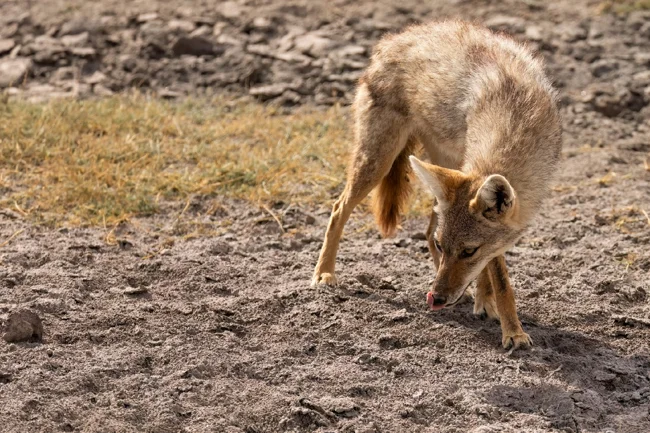
Planning a multi-move strategy (Author: Varvara Dronova).
Golden wolves have an exemplary, almost exemplary, family life. Mates form long-term bonds, often for life. The couple hunts together and raises their puppies together. And when the children grow up, the older brothers and sisters help their parents care for the younger ones. Everything is in the best wolf traditions. 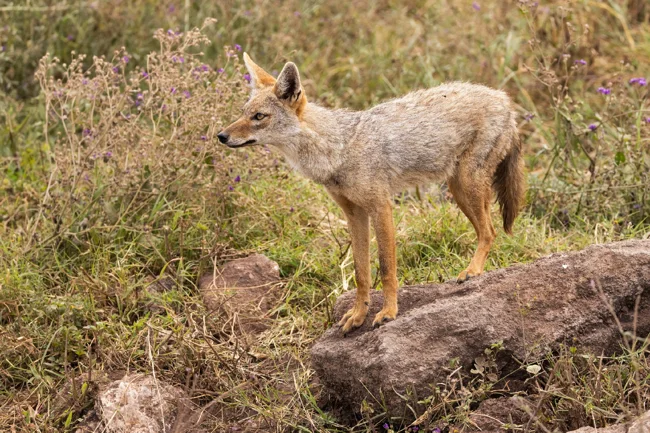
A monument to myself. Because they don't respect me (Author: Varvara Dronova).
Modern research has shown that the golden wolf inhabits a vast territory—from Sudan and Ethiopia to northern Tanzania. Tanzania, where I spent a year and a half searching for it, is the southernmost edge of its range. Here, it can be found primarily in the north—in the Serengeti, Ngorongoro, and around Lake Natron. Intelligence reports that it is also found further south—in Ruaha and Nyerere. It avoids dense forests and mountainous tropics, preferring open savannas, shrub plains, and sparse woodlands. 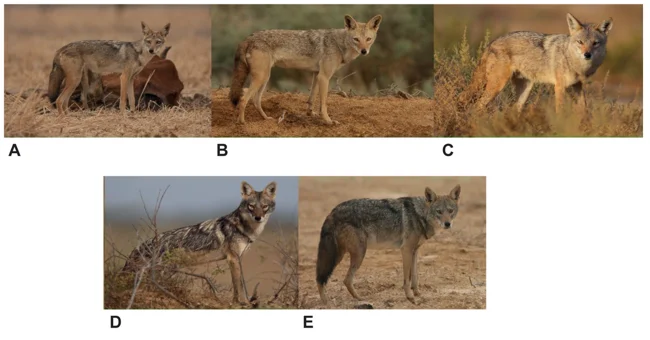
Depending on its habitat, wolves appear very different!
This pest also avoids people. Jackals are bolder, especially black-backed jackals. And you'll never find this bastard again! For a year and a half, I fed the bloodsuckers in various national parks, hoping for a chance encounter. All I got was a trail of tracks on the shore of Lake Natron! Only in May of this year did I manage to spot a wolf for the first time at the edge of a lake in Ngorongoro from afar. Of course, it didn't let me take a photo of it. But it did reveal its location. On my next visit, in June, the wolves exploded. Eight individuals in a couple of days, all quite close. One even approached the car. I managed to watch the wolf browsing in the grass. Tourists, naturally, didn't share my enthusiasm and drove past in search of the "Big Five." 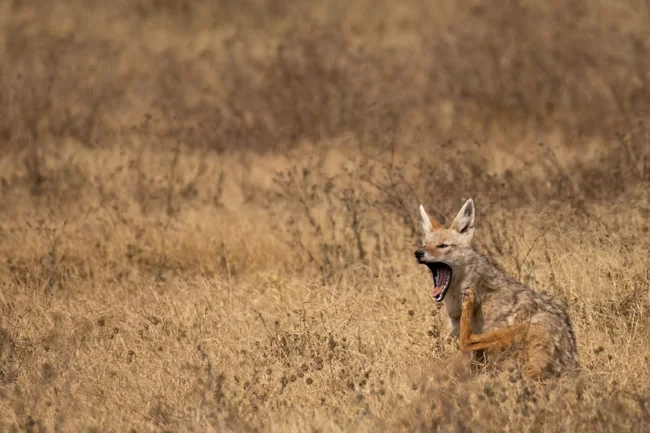
Petty revenge on the photographer – a photo in a creepy pose! (Author: Varvara Dronova)
People generally underestimate our "sub-wolf." Yet it is an important player in the ecosystem: it controls rodent and insect populations, scavenges carrion, and helps maintain balance. When they began exterminating them as "pests" in some areas of Kenya, the number of mice and gophers increased exponentially, and farmers quickly realized their mistake. So now this wolf is treated with much greater respect: small, but useful. Africa can be proud to have a real wolf, albeit a small one. If the grey wolf is a saga of freedom and blood, then the East African is a collection of aphorisms about humility, resourcefulness and low-fat food.



















